Pasta is a favorite comfort food for many, but sometimes we need options that offer more nutrition or fit special diets. The good news is that there’s a whole world of pasta alternatives that pack more protein, fiber, and nutrients than traditional wheat pasta.
These tasty substitutes can help you enjoy your favorite pasta dishes while adding exciting new flavors and textures to your meals.
1. Zucchini Noodles (Zoodles)
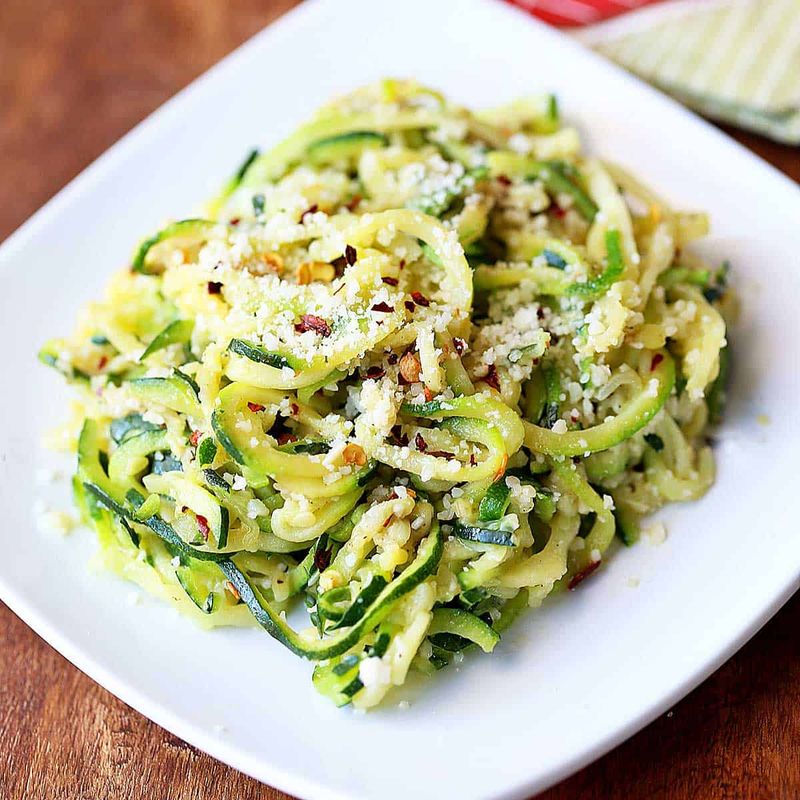
Transform ordinary zucchini into spiralized strands that mimic spaghetti with almost no effort. These vibrant green noodles contain just 20 calories per cup compared to regular pasta’s 200 calories!
Zoodles cook in minutes and absorb the flavors of whatever sauce you pair them with. They’re packed with vitamins A and C, plus potassium and antioxidants that support heart health.
The mild flavor makes them perfect for kids and picky eaters. Simply sauté for 2-3 minutes until slightly tender but still firm – overcooking turns them mushy.
2. Spaghetti Squash
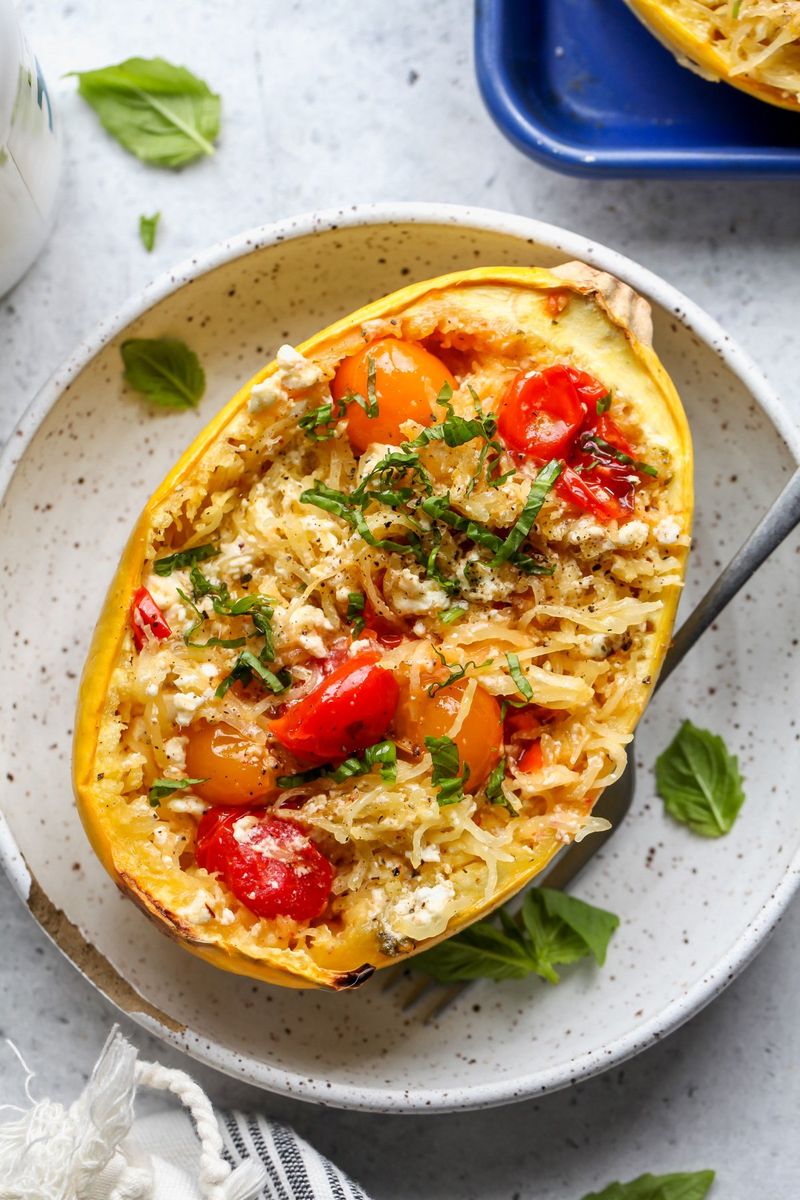
Nature’s ready-made pasta comes in its own yellow shell! When baked, the flesh of this winter squash separates into spaghetti-like strands with a gentle pull of a fork. At just 42 calories per cup, it contains 92% fewer calories than wheat pasta.
The slightly sweet, nutty flavor works beautifully with both creamy and tomato-based sauces. Rich in fiber, vitamins A and C, potassium, and manganese, this squash helps regulate blood sugar while keeping you full longer.
For the best texture, avoid microwaving and opt for roasting cut-side down until tender.
3. Sweet Potato Noodles
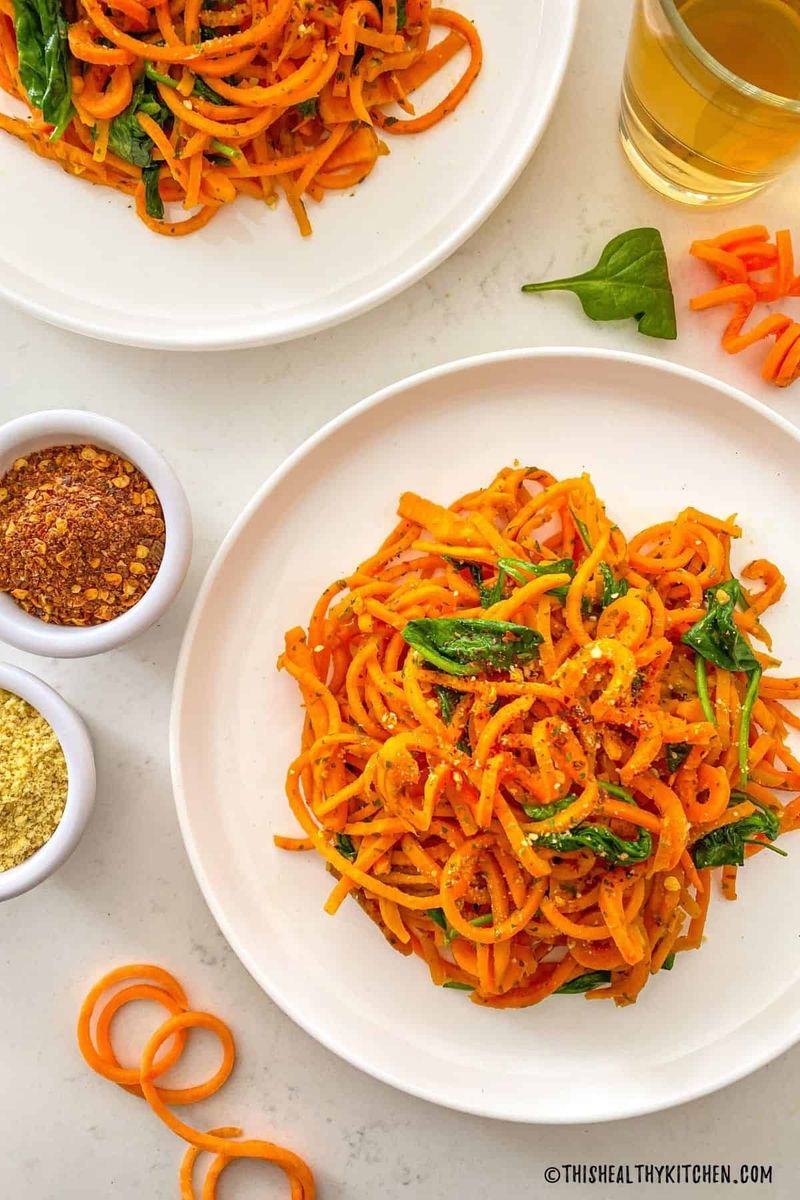
Orange-hued spirals bring natural sweetness and a stunning pop of color to your plate. These vibrant noodles hold their shape better than many veggie alternatives and won’t release excess water during cooking.
Sweet potato noodles deliver a hefty dose of beta-carotene for eye health, plus fiber that keeps your digestion running smoothly. They pair wonderfully with Asian-inspired sauces, especially those with a hint of spice to balance their natural sweetness.
Quick tip: Unlike zucchini, these noodles need about 5-7 minutes of cooking time to reach the perfect al dente texture.
4. Cabbage Ribbons
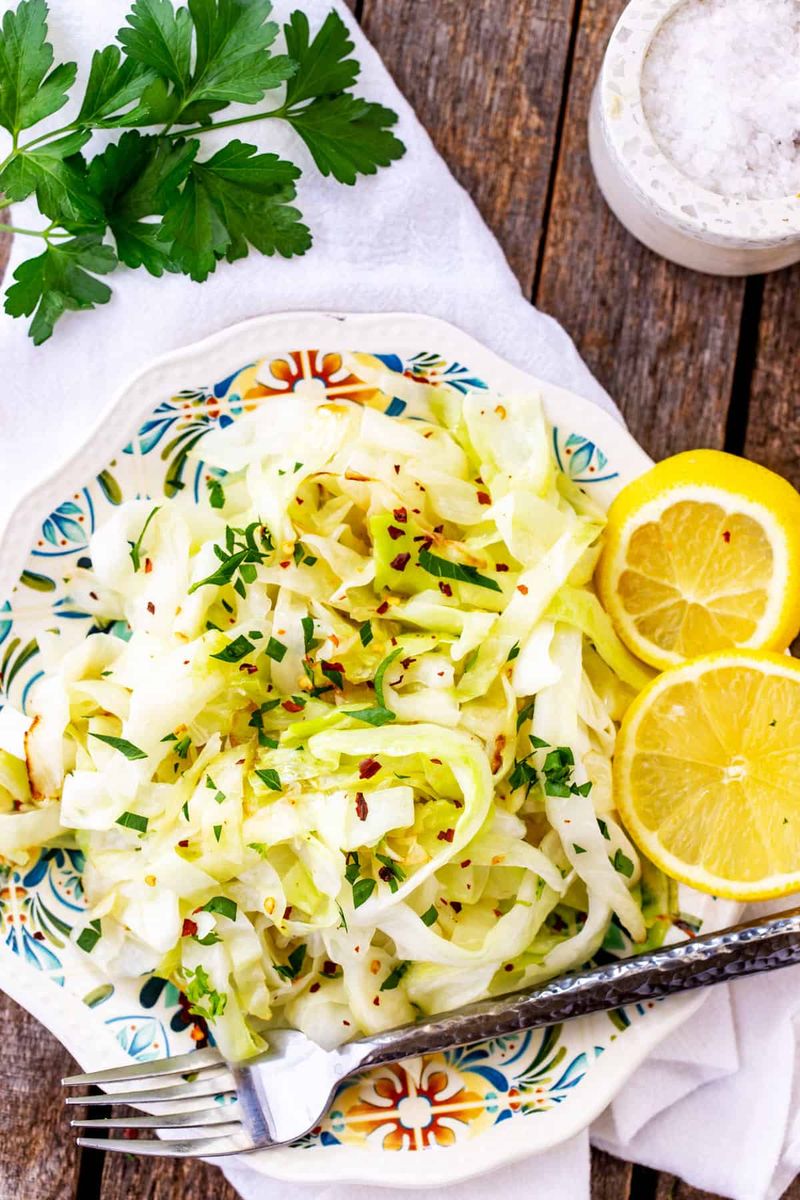
Thinly sliced cabbage transforms into tender noodle-like ribbons when quickly sautéed. This budget-friendly option costs a fraction of specialty pastas while delivering a mild flavor that soaks up sauces beautifully.
Cabbage contains impressive amounts of vitamin K and vitamin C, plus cancer-fighting compounds called glucosinolates. The ribbons work equally well in Asian-inspired dishes or as a base for Italian flavors.
For best results, cook them briefly (2-3 minutes) to maintain a slight crunch. Green cabbage offers a neutral taste, while purple cabbage adds stunning color that brightens with a splash of lemon juice or vinegar.
5. Chickpea Pasta
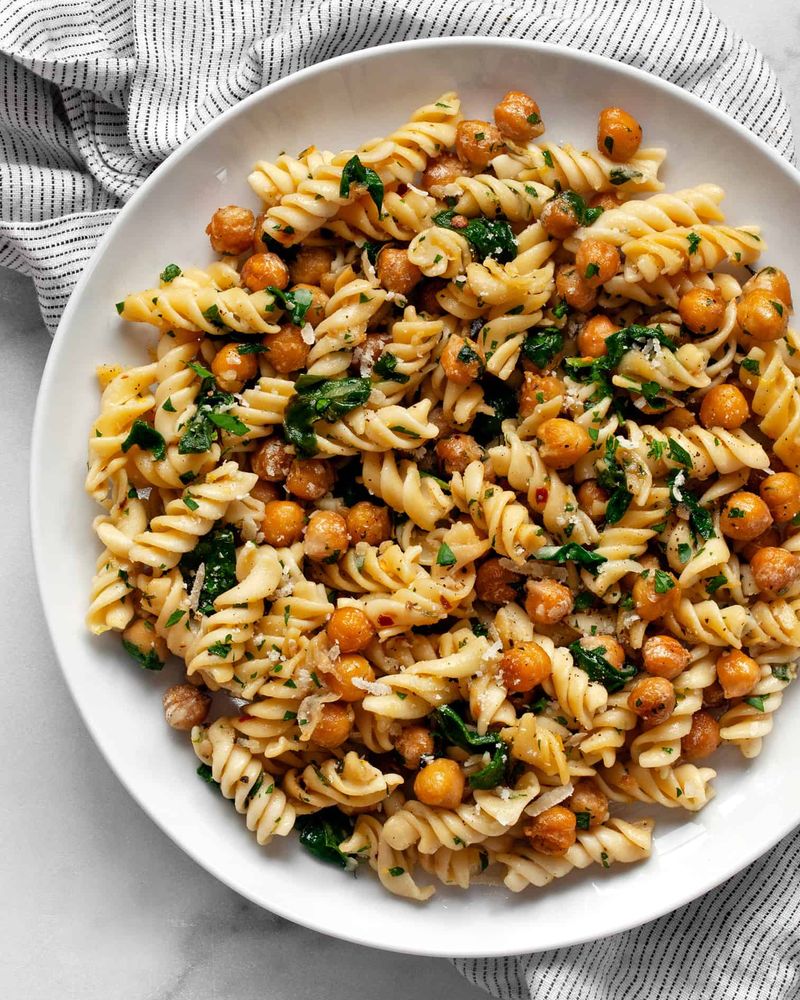
Made from ground chickpeas, this golden-hued pasta has taken the health food world by storm. With double the protein and triple the fiber of wheat pasta, it keeps you satisfied much longer while supporting muscle growth and repair.
The nutty flavor and slightly chewier texture stand up wonderfully to hearty sauces like bolognese or pesto. Many brands offer familiar shapes like penne, rotini, and spaghetti that cook in about the same time as regular pasta.
Parents love that it sneaks extra nutrition into kid-friendly meals without complaints. One serving packs around 20 grams of protein – comparable to what you’d get from three eggs!
6. Carrot Noodles

Bright orange ribbons add a playful crunch and natural sweetness to your pasta dishes. Carrot noodles maintain their texture beautifully whether served raw in cold salads or lightly cooked in warm dishes.
These colorful strands pack an impressive nutritional punch with beta-carotene that converts to vitamin A in your body. One cup provides over 400% of your daily vitamin A needs while adding minimal calories to your meal.
Try them half-cooked for the perfect balance of tenderness and crunch. They shine with light vinaigrettes or herb-infused olive oil rather than heavy sauces that might overwhelm their delicate flavor.
7. Lentil Pasta (Red or Yellow)
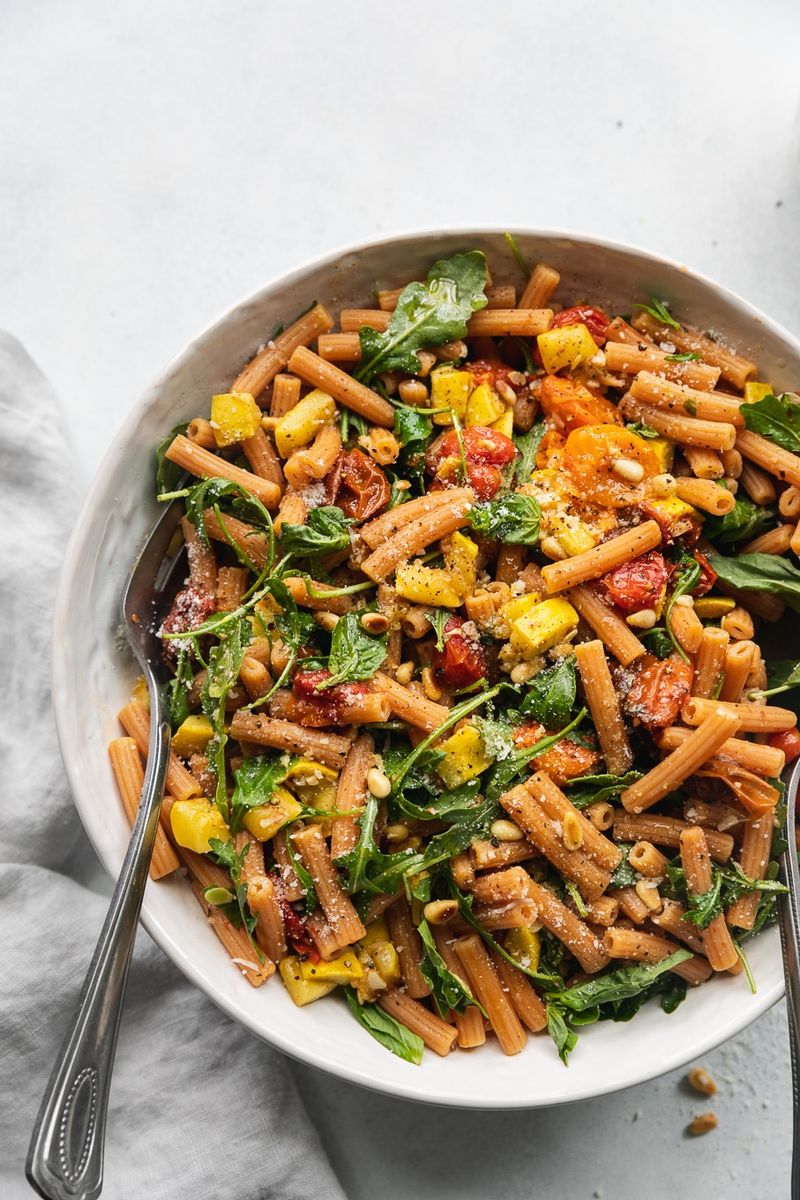
Vibrant red and yellow lentil pastas bring a protein powerhouse to your plate with a mild, earthy flavor. These colorful noodles hold their shape remarkably well during cooking, avoiding the mushiness that plagues some alternative pastas.
A single serving delivers nearly 25% of your daily iron needs and around 15 grams of plant-based protein. Red lentil varieties offer a slightly sweeter profile, while yellow lentil pasta provides a more neutral backdrop for your favorite sauces.
The cooking water turns the same bright hue as the pasta – don’t worry, this is completely normal! For perfect texture, test frequently and drain promptly when al dente.
8. Black Bean Pasta
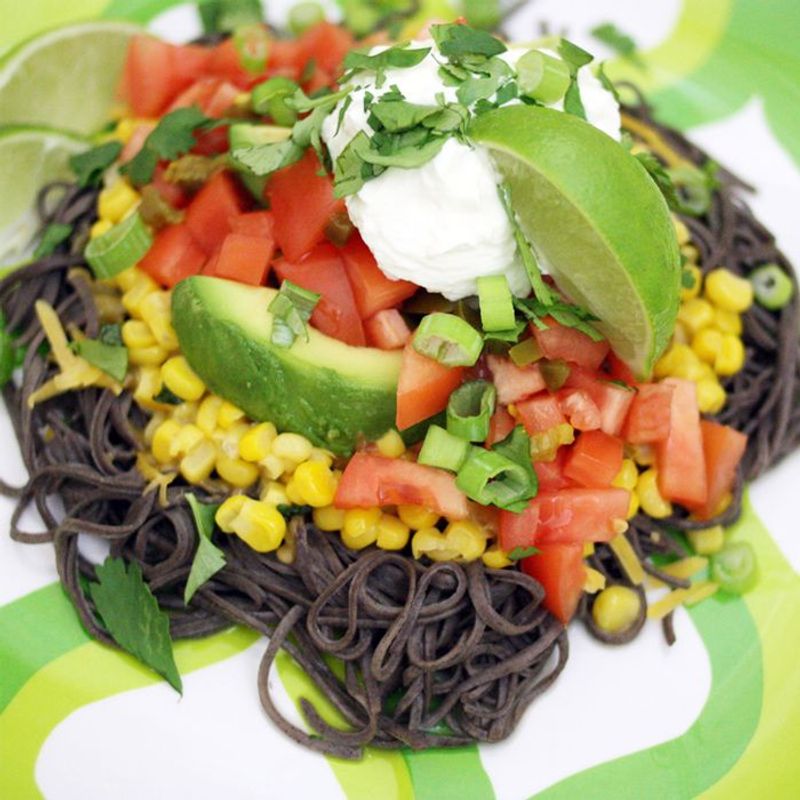
Striking jet-black noodles make a dramatic statement on any plate while delivering impressive nutrition. Made simply from black beans and water, these dramatic strands pack a whopping 25 grams of protein per serving.
The earthy flavor pairs beautifully with Mexican and southwestern ingredients like lime, cilantro, and avocado. Their exceptional fiber content (around 15 grams per serving) helps stabilize blood sugar and keeps your digestive system running smoothly.
Black bean pasta cooks faster than wheat varieties – typically ready in just 4-6 minutes. The cooking water will turn dark purple, but don’t worry – this is just the natural pigments from the beans.
9. Edamame Pasta
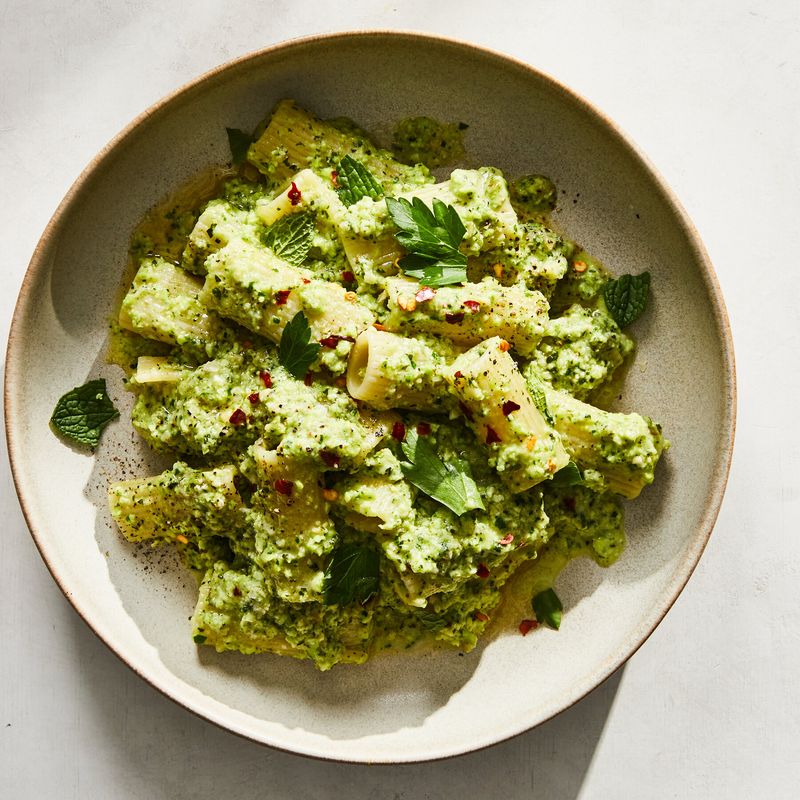
Bright green noodles made from young soybeans deliver a mild, slightly sweet flavor that kids and adults alike enjoy. With an impressive 24 grams of complete protein per serving, this pasta alternative outperforms even animal proteins in nutritional value.
The texture closely mimics traditional pasta with a satisfying chew that holds up well to sauces. Edamame pasta contains all nine essential amino acids your body can’t produce on its own, making it especially valuable for vegetarians and vegans.
Many brands offer just one ingredient – organic edamame beans – avoiding the additives found in some alternative pastas. The cooking time runs slightly shorter than wheat pasta, usually ready in 5-7 minutes.
10. Mung Bean Noodles (Glass Noodles)
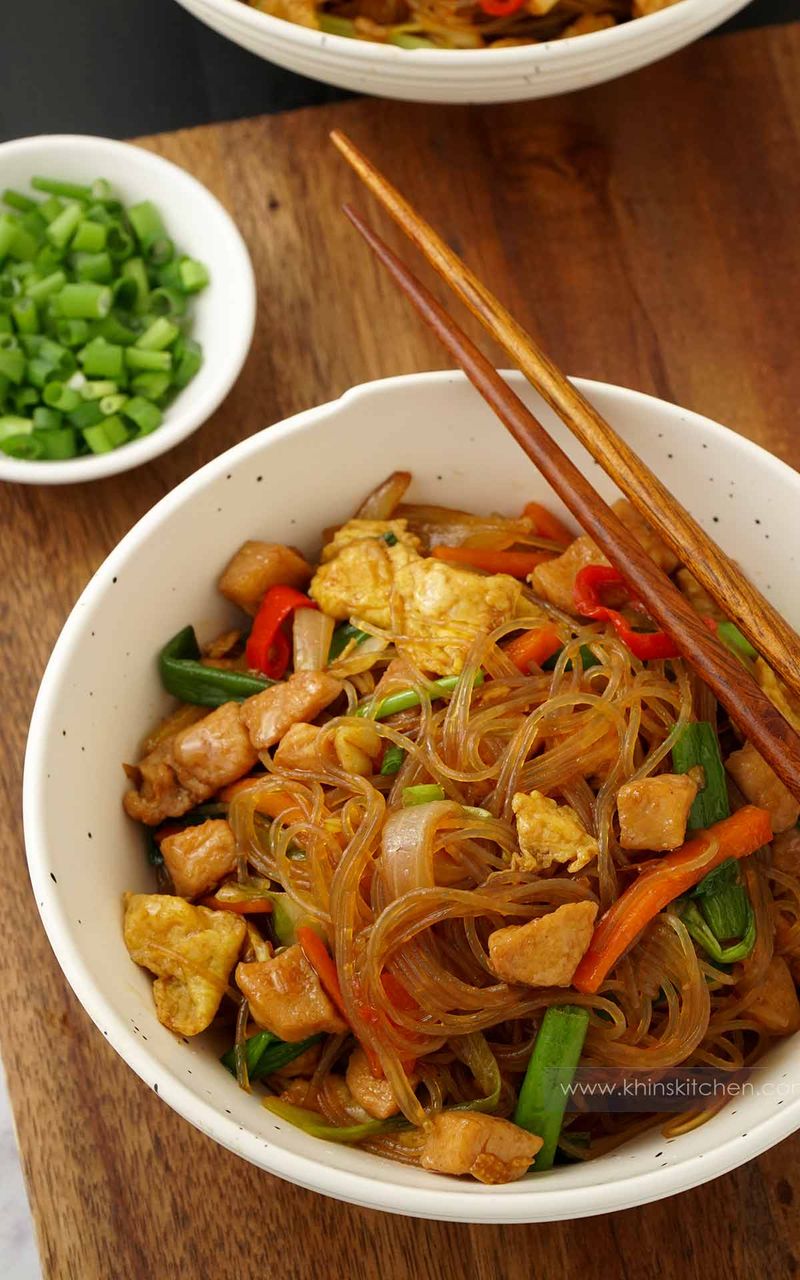
Translucent strands that become nearly clear when cooked have been a staple in Asian cuisine for centuries. These delicate noodles absorb the flavors of broths and sauces like tiny flavor sponges.
Naturally gluten-free and fat-free, mung bean noodles offer a good source of iron, potassium, and selenium. Their unique chewy-yet-tender texture works beautifully in soups, stir-fries, and cold noodle salads.
No boiling required – simply soak in hot water for 5-10 minutes until soft and transparent. Once cooked, they can be served hot or chilled, making them perfect for meal prep. The neutral flavor makes them incredibly versatile across cuisines.
11. Whole Wheat Pasta
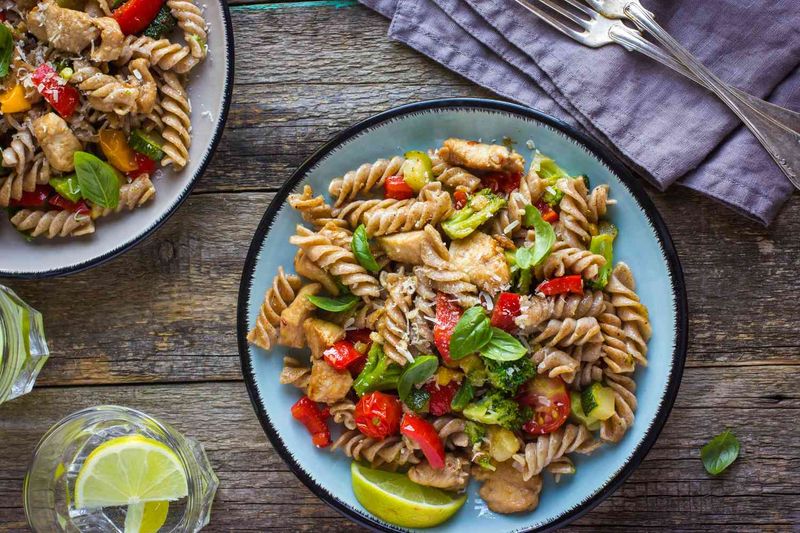
The gateway alternative for pasta lovers, whole wheat varieties keep the familiar taste and texture while significantly boosting nutrition. Made from the entire wheat grain, these brown-hued noodles contain the bran and germ that are removed from white pasta.
The result is triple the fiber content and a lower glycemic impact that won’t spike your blood sugar. Modern versions have improved tremendously in texture – no more cardboard-like noodles that fall apart!
Whole wheat pasta takes slightly longer to cook than refined versions. The nutty, complex flavor stands up beautifully to robust sauces like mushroom, meat ragù, or garlicky olive oil with herbs.
12. Brown Rice Pasta
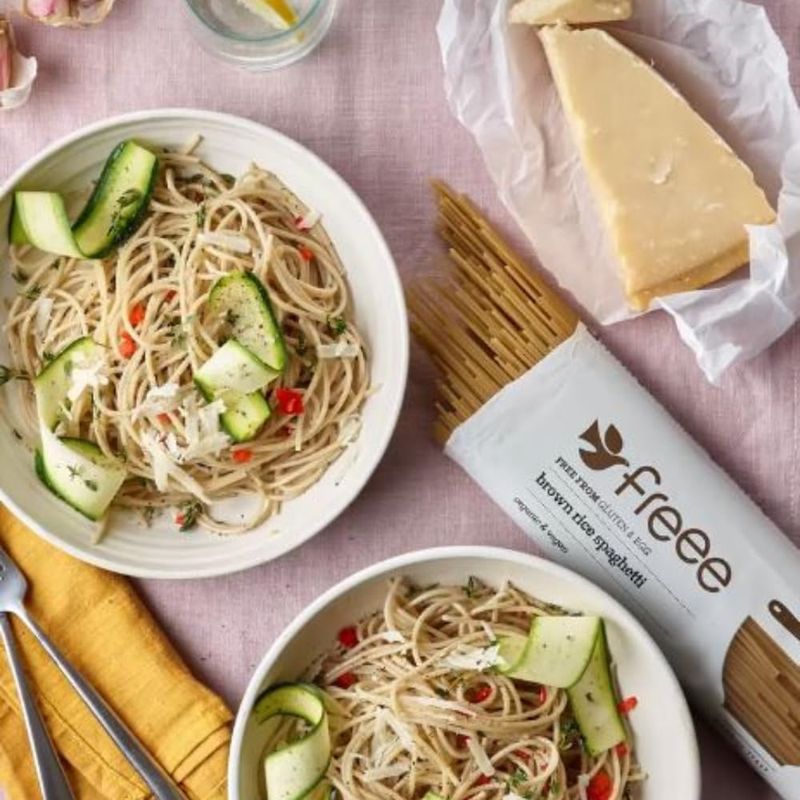
Pale golden noodles with a mild, slightly nutty flavor offer a gentle introduction to gluten-free pasta alternatives. Made from ground brown rice, these noodles have won over many who were disappointed by other gluten-free options.
Brown rice pasta contains more fiber and nutrients than white rice varieties, including manganese for bone health and selenium for immune function. The texture comes remarkably close to traditional wheat pasta when cooked properly.
The key to perfect brown rice pasta is rinsing it immediately after cooking to remove excess starch. Follow package directions carefully as cooking times vary widely between brands – some need just 7 minutes while others require 15.
13. Quinoa Pasta
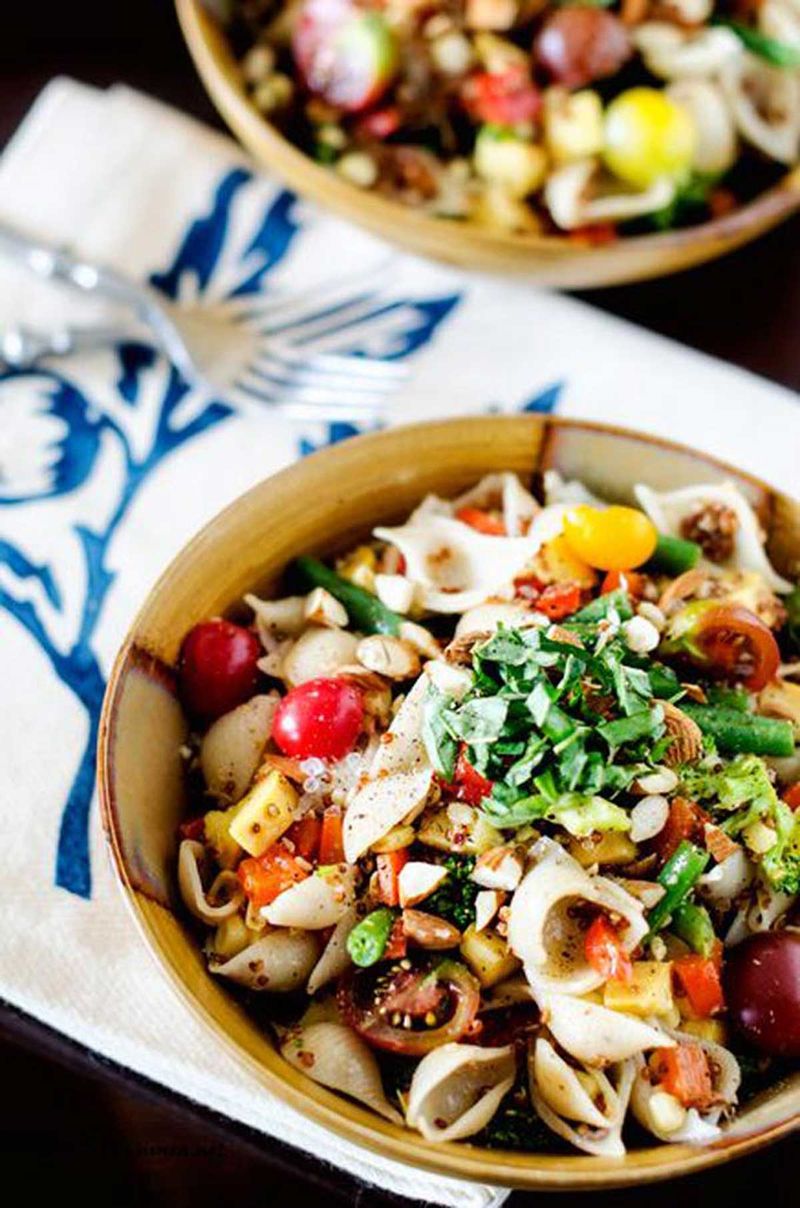
Speckled with tiny flecks of the ancient grain, quinoa pasta offers a subtle nutty flavor and impressive protein content. As one of the few plant foods containing all nine essential amino acids, quinoa creates a pasta that supports muscle recovery and growth.
The texture holds up well to both light and hearty sauces without becoming mushy. Many brands combine quinoa with corn or rice flour for improved structure, creating a familiar pasta experience without gluten.
Quinoa pasta cooks quickly – usually ready in 6-8 minutes – but can go from perfect to overcooked in seconds. The mild flavor makes it kid-friendly while the added protein makes it a favorite among athletes.
14. Spelt Pasta
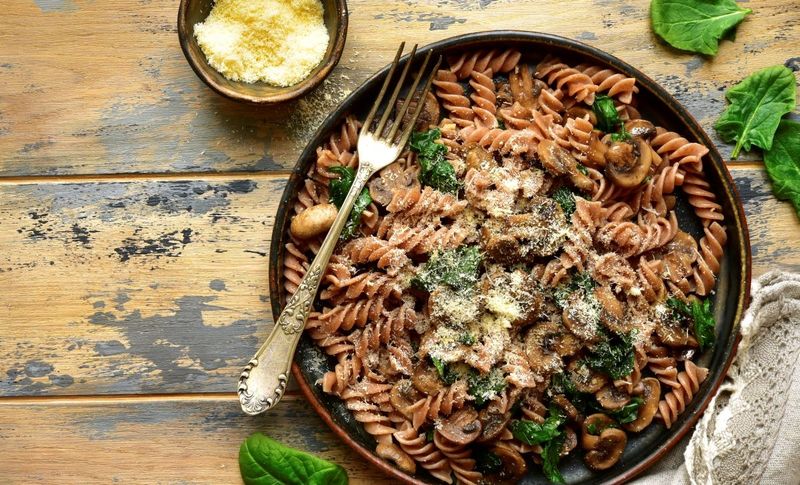
Ancient grain pasta with a rich, nutty flavor and satisfying chew has been enjoyed in Europe for centuries. Spelt contains gluten but is often better tolerated by those with wheat sensitivities (though not celiac disease).
The robust texture holds up exceptionally well to cooking, rarely becoming mushy even when slightly overcooked. Nutritionally, spelt pasta offers more protein, fiber, and minerals than white pasta while providing complex B vitamins for energy.
The pronounced wheaty flavor pairs beautifully with rustic sauces like wild mushroom, sage butter, or hearty vegetable ragouts. Cook time runs slightly longer than regular pasta – usually 10-12 minutes for the perfect al dente bite.
15. Kamut Pasta
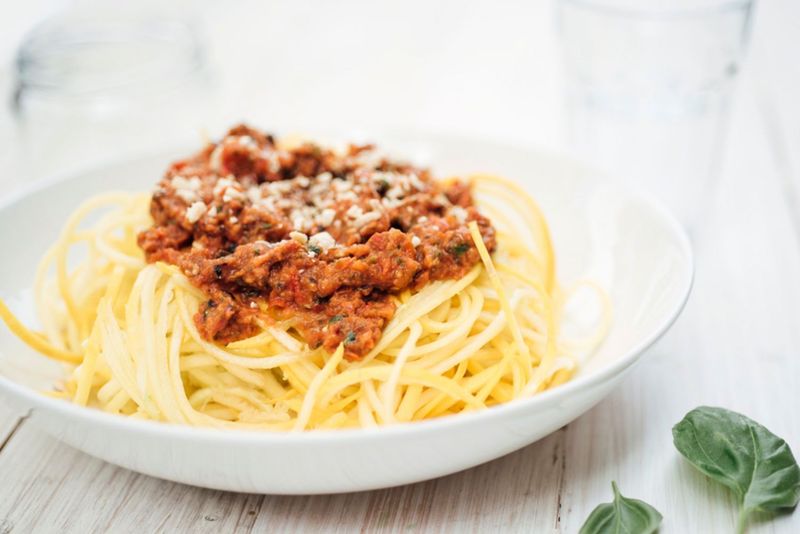
Golden amber noodles made from an ancient Egyptian wheat variety bring a buttery, slightly sweet flavor to your plate. Kamut (also called Khorasan wheat) contains gluten but is often better tolerated by those with mild wheat sensitivities.
The nutritional profile impresses with 30% more protein than regular wheat pasta and higher amounts of selenium, zinc, and magnesium. The firm, satisfying texture holds its shape beautifully during cooking and reheating.
Kamut pasta pairs wonderfully with Mediterranean flavors like olive oil, tomatoes, and herbs. The naturally sweet notes complement both light summer sauces and hearty winter dishes. Look for it in specialty stores or Italian markets.
16. Shirataki Noodles (Konjac Noodles)

Nearly calorie-free translucent noodles made from the konjac yam root have gained popularity among carb-conscious eaters. These unique Japanese noodles contain mostly water and glucomannan fiber, with virtually zero calories, carbs, or fat.
The bouncy, slightly chewy texture differs from wheat pasta but works wonderfully in Asian-inspired dishes. Shirataki noodles come packaged in liquid and require rinsing to remove their characteristic fishy smell, which completely disappears after proper preparation.
They don’t need cooking – just a quick rinse and dry-fry in a hot pan to remove excess moisture. The noodles have no flavor of their own but absorb surrounding sauces and seasonings beautifully.
17. Seaweed Noodles (Kelp Noodles)
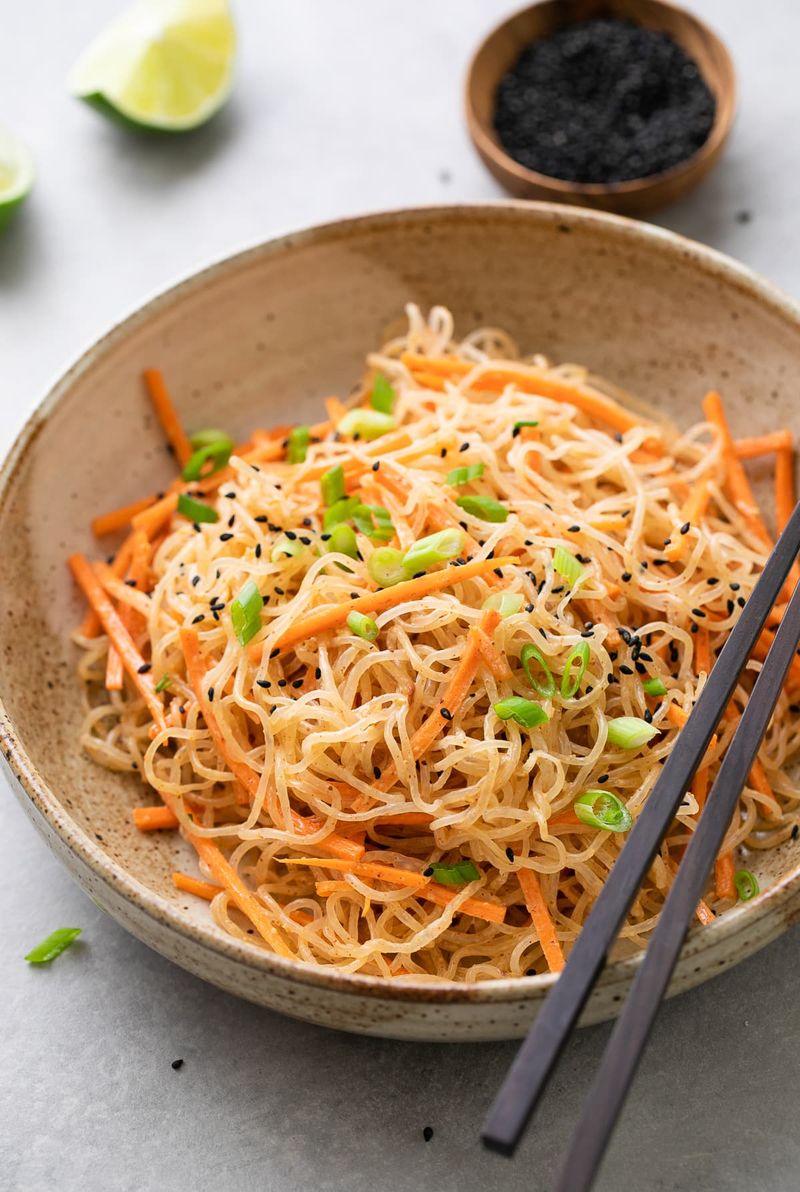
Crystal-clear noodles made from kelp deliver a satisfying crunch with almost no calories or carbs. These ocean-harvested strands contain just three ingredients: kelp (a type of seaweed), sodium alginate (a salt extracted from brown seaweed), and water.
Naturally rich in iodine, calcium, and iron, kelp noodles support thyroid function and bone health. The neutral flavor takes on whatever sauce you pair them with, while the unique crunchy texture adds exciting dimension to salads and stir-fries.
No cooking needed – just rinse and serve! For a softer texture similar to al dente pasta, soak them in lemon juice for 30 minutes before using. They stay fresh for months unopened in your pantry.
18. Cauliflower Gnocchi
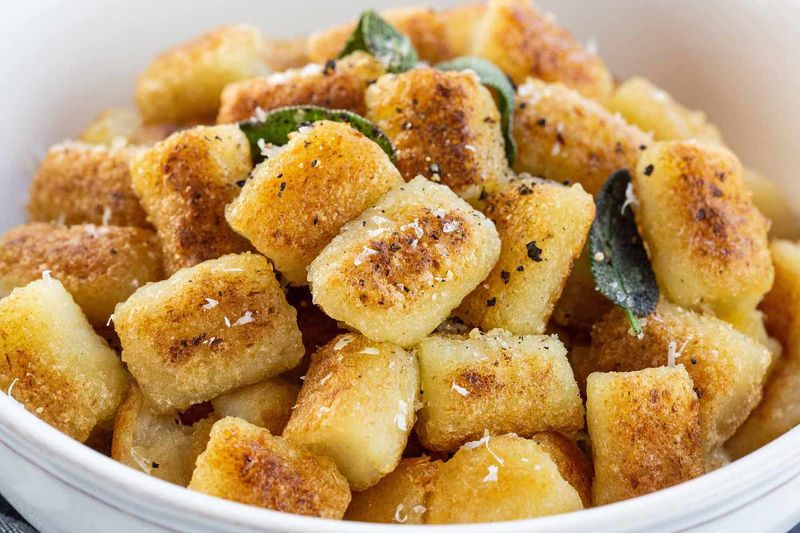
Pillowy dumplings made primarily from cauliflower have taken the pasta alternative world by storm. These little nuggets deliver the comfort food experience of traditional potato gnocchi with a fraction of the carbs and calories.
Cauliflower gnocchi typically contains just five simple ingredients: cauliflower, cassava flour, potato starch, olive oil, and salt. The mild flavor works with everything from classic marinara to pesto to brown butter and sage.
Skip boiling and opt for pan-frying from frozen for the best texture – this prevents the gumminess that can happen when boiled. One cup provides three grams of fiber and two grams of protein for around 140 calories.
19. Soba Noodles (Buckwheat)
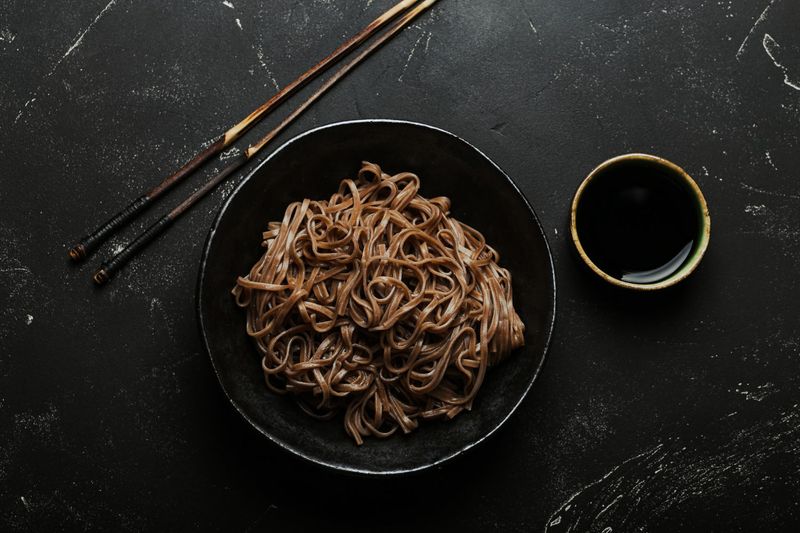
Slender brown noodles with a distinctive nutty flavor have been a Japanese staple for centuries. Made primarily from buckwheat flour (which, despite its name, isn’t related to wheat and is naturally gluten-free), these noodles offer a unique earthy taste.
Soba delivers more protein than regular pasta plus rutin, a powerful antioxidant that strengthens blood vessels. The firm, slightly chewy texture works beautifully in both hot and cold preparations.
Traditional soba contains some wheat flour for binding, but 100% buckwheat versions are available for gluten-free diets. They cook quickly (usually 4-5 minutes) and are traditionally served chilled with a dipping sauce or hot in broth.
20. Hearts of Palm Pasta
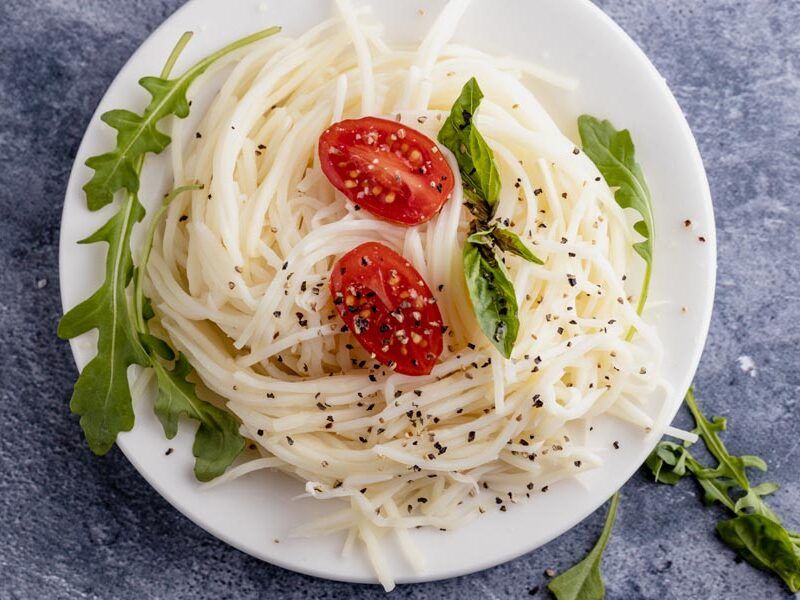
White, tender strands made from the inner core of palm trees offer a pasta experience with remarkable nutritional benefits. These noodles contain just 20 calories per serving with 4 grams of fiber, zero fat, and minimal carbs.
The mild, slightly tangy flavor is more neutral than many vegetable noodles, making it versatile across cuisines. Hearts of palm pasta comes pre-cooked in pouches or cans – simply drain, rinse, and heat briefly with your sauce.
The texture resembles al dente pasta with a pleasant tender-firm bite that holds up well to sauces. Low in calories but surprisingly filling, these noodles have become a favorite among those following keto or low-carb diets.
21. Beet Noodles
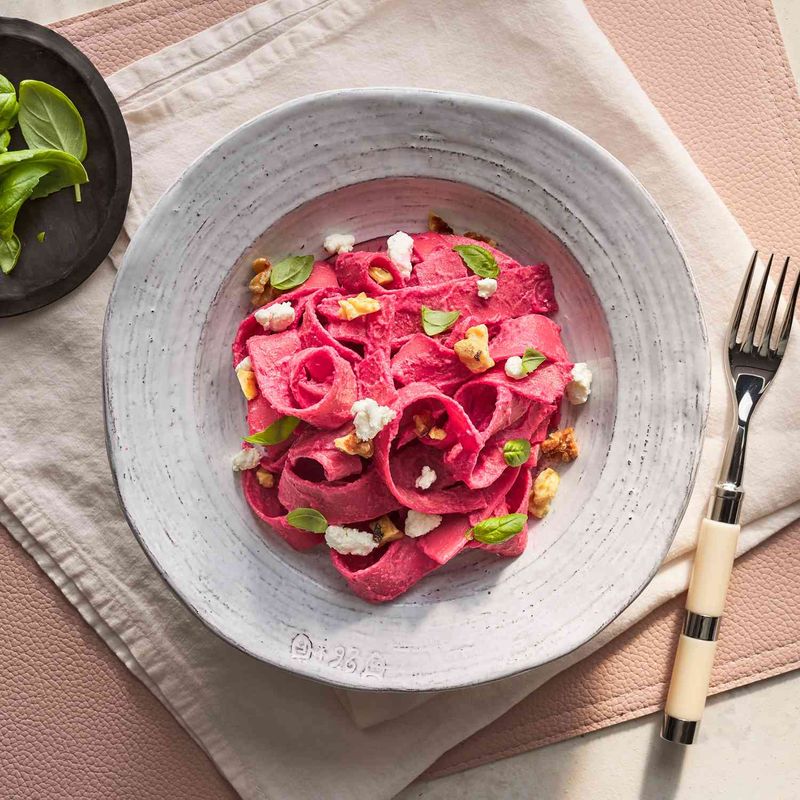
Stunning magenta spirals add dramatic color and earthy sweetness to your plate. These vibrant veggie noodles not only create Instagram-worthy meals but also deliver impressive nutrition with each twirl.
Beets contain natural nitrates that may improve blood flow and athletic performance. Their natural sweetness intensifies when cooked, creating a unique flavor experience that pairs beautifully with goat cheese, walnuts, or citrus dressings.
Quick cooking is essential – just 3-4 minutes in a hot pan preserves their firm texture and prevents color bleeding. The striking pink hue makes them especially popular for Valentine’s Day dinners or any meal that could use a colorful nutrition boost.
Leave a comment